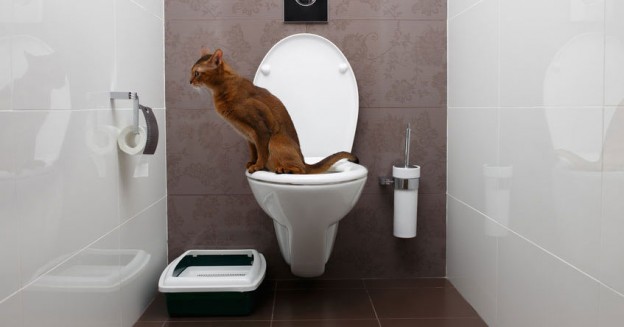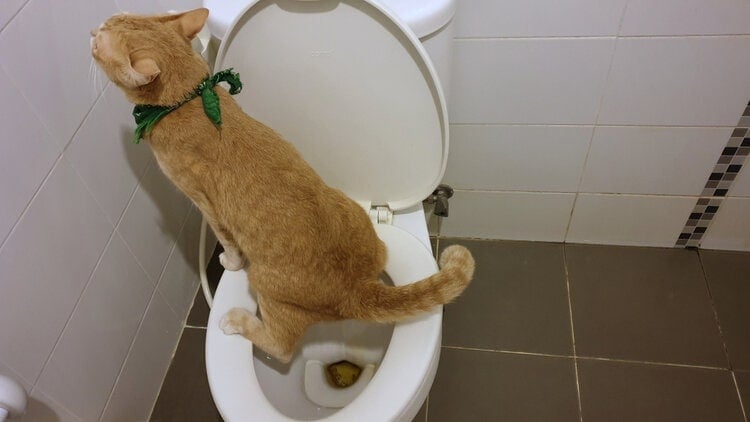The Consequences of Flushing Cat Poop Down Your Toilet - Safeguard Your Pipes
The Consequences of Flushing Cat Poop Down Your Toilet - Safeguard Your Pipes
Blog Article
Almost everyone will have his or her own rationale involving How to Dispose of Cat Poop and Litter Without Plastic Bags.

Introduction
As cat owners, it's vital to bear in mind exactly how we get rid of our feline close friends' waste. While it may appear convenient to purge cat poop down the toilet, this method can have damaging effects for both the atmosphere and human health and wellness.
Alternatives to Flushing
The good news is, there are safer and a lot more liable methods to throw away feline poop. Think about the following alternatives:
1. Scoop and Dispose in Trash
The most usual approach of getting rid of feline poop is to scoop it into a biodegradable bag and toss it in the trash. Make sure to make use of a committed clutter scoop and dispose of the waste without delay.
2. Use Biodegradable Litter
Opt for eco-friendly pet cat litter made from products such as corn or wheat. These litters are eco-friendly and can be securely taken care of in the garbage.
3. Bury in the Yard
If you have a yard, take into consideration hiding feline waste in a marked area far from veggie gardens and water sources. Be sure to dig deep adequate to stop contamination of groundwater.
4. Install a Pet Waste Disposal System
Purchase a pet dog waste disposal system specifically created for pet cat waste. These systems use enzymes to break down the waste, minimizing smell and environmental influence.
Health Risks
Along with environmental issues, purging feline waste can additionally position wellness risks to humans. Feline feces may include Toxoplasma gondii, a bloodsucker that can cause toxoplasmosis-- a potentially serious disease, especially for expectant women and people with weakened immune systems.
Ecological Impact
Flushing pet cat poop introduces damaging pathogens and bloodsuckers into the supply of water, positioning a considerable threat to water communities. These contaminants can adversely influence aquatic life and concession water quality.
Conclusion
Responsible family pet ownership expands past providing food and shelter-- it also includes appropriate waste monitoring. By avoiding flushing feline poop down the bathroom and choosing different disposal approaches, we can lessen our environmental impact and safeguard human health.
Why Can’t I Flush Cat Poop?
It Spreads a Parasite
Cats are frequently infected with a parasite called toxoplasma gondii. The parasite causes an infection called toxoplasmosis. It is usually harmless to cats. The parasite only uses cat poop as a host for its eggs. Otherwise, the cat’s immune system usually keeps the infection at low enough levels to maintain its own health. But it does not stop the develop of eggs. These eggs are tiny and surprisingly tough. They may survive for a year before they begin to grow. But that’s the problem.
Our wastewater system is not designed to deal with toxoplasmosis eggs. Instead, most eggs will flush from your toilet into sewers and wastewater management plants. After the sewage is treated for many other harmful things in it, it is typically released into local rivers, lakes, or oceans. Here, the toxoplasmosis eggs can find new hosts, including starfish, crabs, otters, and many other wildlife. For many, this is a significant risk to their health. Toxoplasmosis can also end up infecting water sources that are important for agriculture, which means our deer, pigs, and sheep can get infected too.
Is There Risk to Humans?
There can be a risk to human life from flushing cat poop down the toilet. If you do so, the parasites from your cat’s poop can end up in shellfish, game animals, or livestock. If this meat is then served raw or undercooked, the people who eat it can get sick.
In fact, according to the CDC, 40 million people in the United States are infected with toxoplasma gondii. They get it from exposure to infected seafood, or from some kind of cat poop contamination, like drinking from a stream that is contaminated or touching anything that has come into contact with cat poop. That includes just cleaning a cat litter box.
Most people who get infected with these parasites will not develop any symptoms. However, for pregnant women or for those with compromised immune systems, the parasite can cause severe health problems.
How to Handle Cat Poop
The best way to handle cat poop is actually to clean the box more often. The eggs that the parasite sheds will not become active until one to five days after the cat poops. That means that if you clean daily, you’re much less likely to come into direct contact with infectious eggs.
That said, always dispose of cat poop in the garbage and not down the toilet. Wash your hands before and after you clean the litter box, and bring the bag of poop right outside to your garbage bins.
https://trenchlesssolutionsusa.com/why-cant-i-flush-cat-poop/

I was shown that editorial on How to Dispose of Cat Poop and Litter Without Plastic Bags from a friend on a different blog. Are you aware of somebody who is excited about the subject? Take a moment to share it. We love reading our article about Can You Flush Cat Poop Down The Toilet?.
Click Here Report this page